Hello hello! We are officially a week into winter and I couldn’t be happier. I don’t know what the “bird with a french fry” analogy is for cold weather — perhaps “a bird who has found a full feeder?” — but it’s safe to say that come late December, post-holidays, you can always apply it to me. I love the deep dark of January; the hush of the world; the slow, quiet time when spring is months (and months) away and there is nothing to do but burrow down, surrender (I highly recommend surrender), and allow yourself to inhabit the lull fully. The light will come soon enough, the green, the growth, the things to do — it will all be there waiting. We don’t have to rush it or rush into it.
I also love this time of year because there is plenty of time to read — murky midwinter mornings on the couch; moments to steal in front of the fireplace; the deep exhale after hours outside in the cold. We have more books for winter than perhaps any other season and in many ways they are our favorite tales, maybe because in winter we have the margin to inhabit them more fully — and to be more fully present in our lives.
If you weren’t around this time last year, be sure to check out my 2020 special edition on winter, which features some of my favorite winter books of all time (I think if I had to pick my #1, it would be Wong Herbert Yee’s Tracks in the Snow, which I still recite when I am walking through snow, with or without my children), and includes booklists about bears and snowplows (a big hit with fans of the garbage truck):
I’ve not included booklists on Bookshop and Amazon this time, as I have decided to forgo that part of this newsletter. I will still use affiliate links (and be transparent about that when I do); my Bookshop.org storefront will remain alive and well with all sorts of topical book lists for various ages, stages, and issues, but I’ll not add seasonal/holiday lists anymore. When seeking out titles I cover here, I encourage you to utilize your library, shop used, and support your local independent bookstore whenever possible.
Okay, let’s jump into this snowdrift of books!
A Big Bed for Little Snow by Grace Lin (2019)
There are a lot of stories about where snow comes from — our favorite is Grimm’s Mother Holle, where the title character shakes out her feather bed and the flakes come down — but never have I been so charmed by one before A Big Bed for Little Snow.
It’s not a surprise to any long-time reader of this newsletter that I am a fan of Grace Lin’s, and if you’re wondering why, well, this book is why. She writes and illustrates (here in spare but stunning watercolors) stories that please everyone, children and adults alike — all of whom can relate to this particular situation, where Little Snow’s mother makes him a new bed for winter, telling him clearly, “This bed is for sleeping, not jumping.”
Well.
Of course Little Snow spends the rest of this supremely satisfying narrative jumping and jumping and jumping — sometimes “small, soft jumps,” sometimes “big, high jumps,” and it’s only gradually, as tiny feathers “squeeze out of his bed and flutter down” that readers realize he is the one making the world’s snow.
You wouldn’t think such a basic, straightforward story would be — could be — transfixing for children, but it is (don’t we all like seeing our fantasies played out by someone else?) The pleasure of this book is real and strong, and one you’ll find yourself returning to (if your littles don’t beat you to it) for a repeat experience.
(If you like this one, I highly recommend seeking out its predecessor, which is not seasonal but follows a similar — and equally enjoyable — pattern, A Big Mooncake for Little Star.)
Extra Yarn by Mac Barnett, illustrated by Jon Klassen (2012)
It’s a bit hard to classify or even explain Extra Yarn — I’ve decided to call it magical realism, and I can also understand a review I once read that claimed it was the best children’s book of all time (though I’m not sure I’d go that far personally, I do agree that it’s perfectly crafted book in basically every way, from Barnett’s droll but excellent prose to Klassen’s clean, minimal watercolors).
The story is this: one day, Annabelle, who lives in a town “where everywhere you looked was either the white of snow or the black of soot from chimneys,” finds a box filled with colorful yarn, and begins knitting for everyone and everything around her. Not everyone loves this or even understands it, but Annabelle keeps going (there is always extra yarn) until she has changed both her town and her world with her generosity of work and spirit. But if there is one thing villains cannot abide, it’s the generosity of work and spirit, and so an archduke appears from across the sea, demanding to buy Annabelle’s miraculous box of yarn. She refuses his offers, he hires some robbers, they succeed in their mission to steal the yarn and deliver it to the archduke — but when he opens the box, it’s empty. He throws the box into the sea where, in due course, it makes its way back to Annabelle and its destiny as the limitless box of extra yarn, intended to make the world a better place.
This is a tale full of wonder and magic, to be sure, but also the subtle message that money can’t buy happiness (or, at least, that money isn’t the point to some things, if not many things). Whether or not the latter comes through to small readers hardly matters: this is a gorgeous read that manages to be both entertaining and wildly beautiful in a soft, unexpected way. Highly recommended.
Rabbit's Snow Dance by James and Joseph Bruchac, illustrated by Jeff Newman (2012)
In this humorous traditional Iroquois story, we learn that once upon a time, “Rabbit did not look the way rabbits do today” — back then, he was a fellow with a long, beautiful tail but zero patience, and he often went around demanding things he wanted, including, unwisely, snow when it is not time for snow.
Since Rabbit knows a special song to make it snow, he has always used it and it has always worked, though he’s never tried it in summer “because that [is] not the right season for a snow song.” But now, Rabbit wants snow, and so, against the protest of the other animals — Chipmunk and Squirrel haven’t gathered enough nuts yet, Beaver is not finished with his dam — he plays his special drum and chants a special chant and lo, it snows.
Not satisfied with a little snow, he creates a lot of snow, and it piles higher and higher, allowing him to reach the tender buds high on the trees while the other animals suffer. Foolishly, he falls asleep on the highest branch of a tree, and when the snow melts overnight, in the morning he falls down, down, down, catching his long, beautiful tail on one branch after another, tearing off little bits until his tail is almost gone — and “ever since then, at the time of the year when the snow goes away, you can see those little furry pieces of Rabbit’s tale stuck on certain trees.”
This is a fun porquoi tale full of lessons about patience and selfishness, and what happens when you use your will to get your own way. Newman’s watercolor, gouache, and ink illustrations make it a crowd-pleaser — Rabbit’s facial expressions are just priceless — that you and your readers will return to again and again.
Axle Annie by Robin Pulver, illustrated by Ted Arnold (1999)
Truth: I used to disdain Tedd Arnold’s goofy colored pencil and watercolor wash illustrations, writing them off as too cartoonish (as if that’s a bad thing?), but all it took was my 5yo’s unbridled enthusiasm for his Huggly series, which makes her laugh out loud, for me to realize: we like what we like and if it’s not always high art, who honestly cares?
That’s where Axle Annie falls — don’t get me wrong, there are some strong messages about dedication and dependability, loyalty, right and wrong here. More than anything, though, it’s just a fun story that will have readers rooting for bus driver Annie — Annie, who is always cheerful, full of jokes and magic tricks and silly songs, beloved by the kids who ride her bus. Winter “packs a wallop in Burskyville,” and the superintendent of schools relies on Annie to make it up Tiger Hill when the weather is nasty, and Annie always does. This is why the schools in Burskyville never have a snow day. (This was the Madison, Wisconsin of my childhood, let me tell you.)
Shifty Rhodes, the nastiest bus driver of them all, resents that he never gets a snow day and hates Annie’s ability to come through in a pinch — so he decides to do something about it. He teams up with the new owner of the local ski resort to use a snowmaking machine to make conditions on Tiger Hill too tough even for tough-as-nails Annie.
Does this dastardly ploy work? Heck no! Isn’t the first rule of moral tales that goodness always prevails? Yes! Annie does her best to conquer Tiger Hill, but for the first time, she can’t make it — until she feels a push from behind the bus, hops out, and sees all the townsfolk back there giving it their all. (And then Shifty Rhodes gets his, because this wouldn’t be as satisfying a story if the bad guy escaped scot-free.)
Maybe I am wrong about the inability of zany illustrations and slapstick humor to convey deeper truths; who’s to say? Whether or not your readers take note of Annie’s fine character and the power of a strong community is almost beside the point — you’ll all enjoy hearing about brave Axel Annie either way.
Under the Night Sky by Amy Lundebrek, illustrated by Anna Rich (2008)
I have been lucky enough not once but twice in my lifetime to witness the wild, eerie beauty of the aurora borealis — the bright, slow-dancing northern lights that occur when electrically charged particles from the sun enter the earth’s atmosphere on certain winter nights. This book is an ode to that natural magic — the story of a young boy, alone and asleep in his apartment, waiting for his mother to come home. When she does she flies through the door, full of an unexplained urgency. They bundle up and head down to the building’s parking lot, where they join their neighbors on the hoods of cars and watch the show, as it were, together.
It’s in this tender collective moment that the boy’s mother tells him, “Just remember tonight. Remember these lights, how they dance. And if you ever feel angry that I’m not letting you have your way, remember that I’m on your side. I promise I will always try to give you the best things in life.”
Though it’s largely unspoken, there is an underlying suggestion that this family of two has a life full of challenges, including poverty — and yet, on this night they are utterly fulfilled by this free experience, filled up by the way they’re “whirled and flickered and danced into the darkness of the sky and the twinkling stars.” Rich’s lush, resonant oil paintings offer the sense that this momentary happiness between mother and son is a memory in the making and it’s hard not to get drawn in by the majesty.
This is a book for older readers, for those who are able to pick up on the more subtle message that life can be — in fact is — both difficult and full of beauty, but that is part of what makes it worthwhile.
(If you like this one, also check out SkySisters by Jan Bourdeau Waboose.)
An Orange in January by Dianna Hutts Aston, illustrated by Julie Maren (2007)
You will never look at an orange in January the same way again after reading An Orange in January, and that is reason numero uno for reading it.
This uncomplicated but sincere narrative tells the story of an orange from the moment in spring when the bees feast upon its blossoms, til it grows “slowly and steadily, fed by the earth’s soil and the ocean’s breath,” til it’s picked and goes from “bag to basket, truck to truck,” travels across many miles to a grocery store and rests there, “aglow with the goodness inside it,” until two small hands pluck it from a pile, carry it home, and those same two hands, “pink with cold,” share its segments so that everyone can taste “the sweetness of an orange in January.”
Not only do Maren’s acrylic on bristol board illustrations show every stage of this one single fruit’s journey from tree to table — a process too many of us never think about and children might not know about at all — but Hutts Aston’s text nearly glows with the marvel of it all. That we could eat this gorgeous golden piece of sun in the middle of winter is kind of a miracle, and this beautiful book makes you think about that with the proper gratitude — the word is reverence — it deserves.
Oh! by Kevin Henkes, illustrated by Laura Dronzek (1999)
This is the very first seasonal title I ever purchased, when my eldest was just a baby, and for that reason I’ll keep it forever. Thankfully it’s a book worth hanging onto and revisiting, especially if you have babies and toddlers, as this sweet, simple story was made for them.
Here “the snow falls and falls all night” and in the morning, when everything is white, everyone wants to play. Squirrel comes out (skitter, skitter), then rabbit (hop, hop), then cat (sneak, sneak, sneak), then dog (run, run, run), then, of course, children (jump, jump, jump) — OH! The joys of snow.
I’m not sure anyone could produce a comprehensive story in so few words better than Henkes does here, and it works perfectly with Dronzek’s dreamy acrylic illustrations (the page where “the snow turns blue” is so spot-on only someone who has seen all the different blues, pinks, and purples of snow could have painted it). I have yet to meet a little one — or their grownup — who doesn’t love this book. That devotion is well deserved, indeed.
Snowsong Whistling by Karen E. Lotz, illustrated by Elisa Kleven (1993)
You may not agree with me that winter is the most beautiful season (don’t get me wrong, I am always happy to see spring and its certain mud-bedecked glory, though that’s more of a coming-back-from-the-dead feeling than anything else) but if I’ve learned anything from growing up in a cold, snowy place it’s that the only way to survive it is to lean in. It doesn’t help to complain — in fact, the more awe you’re able to muster, the more wonder there is to be found.
This is why I love Snowsong Whistling. I mean, okay, yes, it’s because I am a true-blue Elisa Kleven fan; I never tire of her overflowing watercolor, colored pencils, ink, crayon, and collage illustrations, which are as touching as ever here — but it’s also because this one, long song of a poem is a celebration of this gorgeous, underrated season.
Lotz manages, in the shortest of monorhymes, to pay homage to all the highlights leading up to the cold, beginning early with the “crisp in the air from I-don’t-know-where” in fall (that scent is impossible to describe — if you know you know) to the “kitten half-sneezing, radiator wheezing, pond water freezing” of the later months, all the way up until the minute you realize,
Brindled dog bristling
Cardinals trysting
Frost feathers glistening
Snowsong whistling
And finally, winter’s come.
The simplicity of this poem makes it accessible for children as young as toddlers but I wouldn’t rule out sharing the joy with older ones, either — after all, the more winters you have under your belt the more you understand the variations of the season. And isn’t it good to be reminded, no matter our age, about the simple pleasures in life?
Yes. Let a whistling snow song be your reminder.
Also highly recommended
The Mitten by Jim Aylesworth
Winter Story by Jill Barklem (part of the Brambly Hedge seasonal series)
Annie and the Wild Animals by Jan Brett
The Snowy Nap by Jan Brett
Katy and the Big Snow by Virginia Lee Burton
The Winter Bear by Ruth Craft
Do Like Kyla by Angela Johnson
The Snowy Day by Ezra Jack Keats
The Tea Party in the Woods by Akiko Miyakoshi
Good Night, Wind: A Yiddish Folktale by Linda Elovitz Marshall
Winter Waits by Lynn Plourde (part of the lovely Mother Earth series, which are out of print and pricey but worth checking for in your library catalog)
Grandmother Winter by Phyllis Root
Snow by Uri Shulevitz
Before Morning by Joyce Sidman
Winter Bees & Other Poems of the Cold by Joyce Sidman (poetry)
Brave Irene by Willliam Steig
The Mitten by Alvin Tresselt
Tracks in the Snow by Wong Herbert Yee
Owl Moon by Jane Yolen
Poetry
Iguanas in the Snow: And Other Winter Poems/Iguanas en la Nieve: Y Otros Poemas de Invierno by Francisco X. Alarcon (one of a seasonal bilingual poetry series)
Stopping by Woods on a Snowy Evening by Robert Frost, illustrated by Susan Jeffers
It’s Snowing! It’s Snowing! Winter Poems by Jack Prelutsky
Winter Poems selected by Barbara Rogasky
For babies and toddlers
Pippa and Pelle in the Winter Snow by Daniela Drescher
In My Den by Sara Gillingham
Walking in a Winter Wonderland as sung by Peggy Lee
Winter by Gerda Muller (wordless but this seasonal series is wonderful)
Rabbit’s Gift by George Shannon
Mittens and Mukluks! Winter in Alaska by Joni Spiess
For older readers, or read-alouds
The Very, Very Far North by Dan Bar-El
Twelve Kinds of Ice by Ellen Bryan Obed (so charming)
The Sea in Winter by Christine Day
Odd and the Frost Giants by Neil Gaiman
Snow and Moon, Ice and Snow by Jessica Day George
Winterfrost by Michelle Houts
Moominland Midwinter by Tove Jansson
Astrid the Unstoppable by Maria Parr
Sugar and Ice by by Kate Messner
Skating Shoes by by Noel Streatfeild (I loved the “Shoes” series as a kid)
Breadcrumbs by Anne Ursu
Everything else
When Winter Comes: Discovering Wildlife in Our Snowy Woods by Aimée Bissonette
The Snow Dancer by Addie Boswell
The Hat by Jan Brett
The Mitten by Jan Brett
Trouble with Trolls by Jan Brett
Snowball Moon by Fran Cannon Slayton
Old Bear and His Cub by Olivier Dunrea
Dozens of Doughnuts by Carrie Finison
Angelina’s Ice Skates by Katharine Holabird
Winter Days in the Big Woods by Laura Ingalls Wilder (one of the My First Little House Books)
Winter on the Farm by Laura Ingalls Wilder (one of the My First Little House Books)
Lemonade in Winter: A Book About Two Kids Counting Money by Emily Jenkins (a great living math book)
Sweetest Kulu by Celina Kalluk
A Day So Gray by Marie Lamba
The Tomten by Astrid Lindgren
Snow Lion by David McPhail
Over and Under the Snow by Kate Messner (part of the four-book, nonfiction Over and Under seasonal series)
Missing Mittens by Stuart J. Murphy (a cute living math book about even and odd numbers)
Ten on the Sled by Kim Norman
First Snow by Bomi Park
The First Snowfall by Anne Rockwell
Poppleton in Winter by Cynthia Rylant (we have absolutely fallen in love with Poppleton lately)
Lucia and the Light by Phyllis Root
Snow by Cynthia Rylant
Mice Skating by Annie Silvestro
The Star Child by The Brothers Grimm, retold by Bernadette Watts
Mouse and Mole: A Winter Wonderland by Wong Herbert Yee
Some Snow Is… by Ellen Yeomans
Thanks so much for reading — I hope you have a beautiful winter. Be sure to take full advantage of this prime time with your family, remember that the best way to survive the cold and the dark is to get outside and sport your way through it, and keep doing the good work of building a culture of reading in your home: you’re doing a fantastic job!
And, as we face the end of a calendar year — which, I like to remind everyone (including myself) is an entirely arbitrary “new year;” we can begin again on any day, at any moment — my wish for you is this: may you hold yourself gently; may you make space for new growth if that’s needed; may you stay open to the possibilities of your life.
With profound gratitude for you and your support,
Sarah





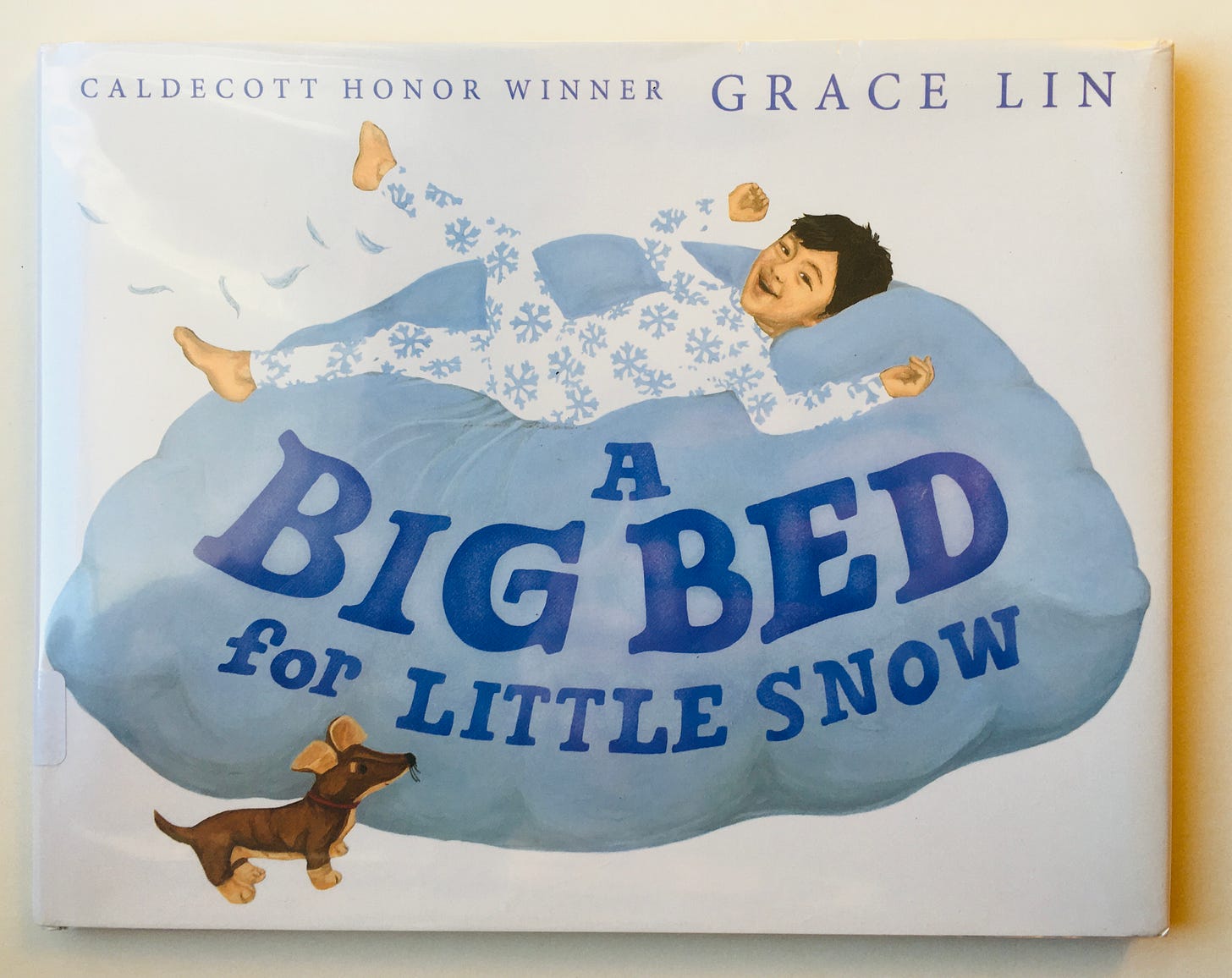

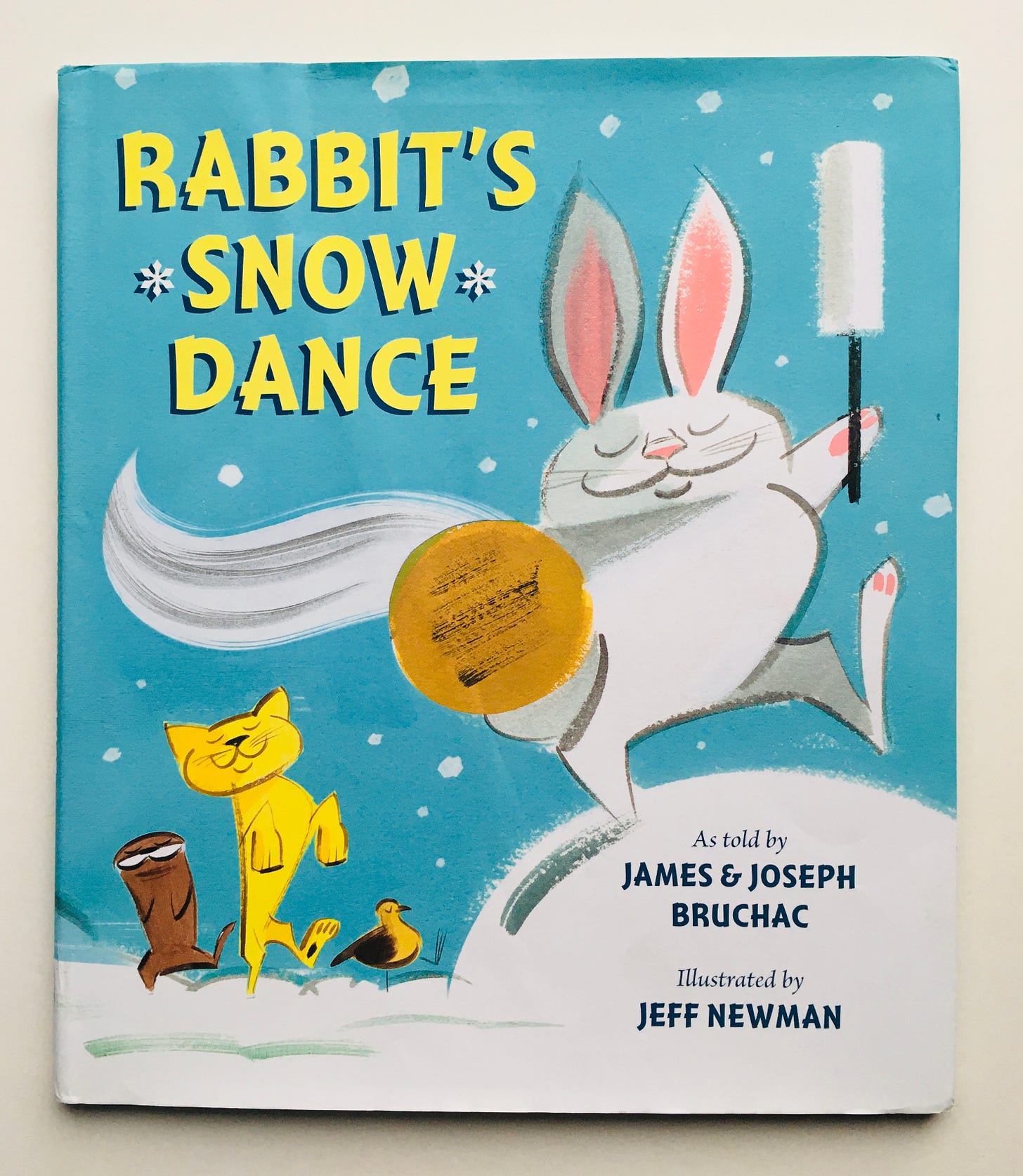
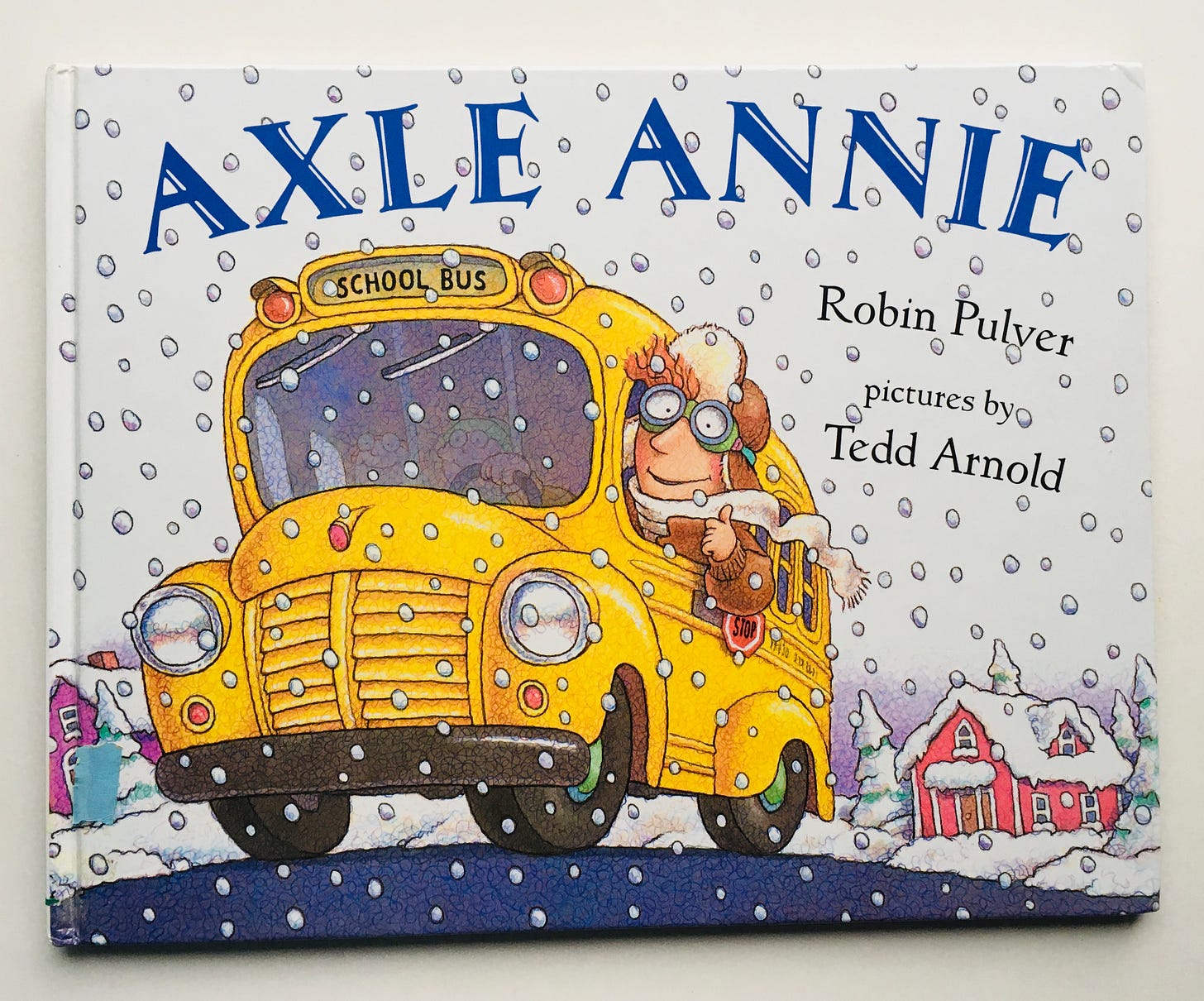
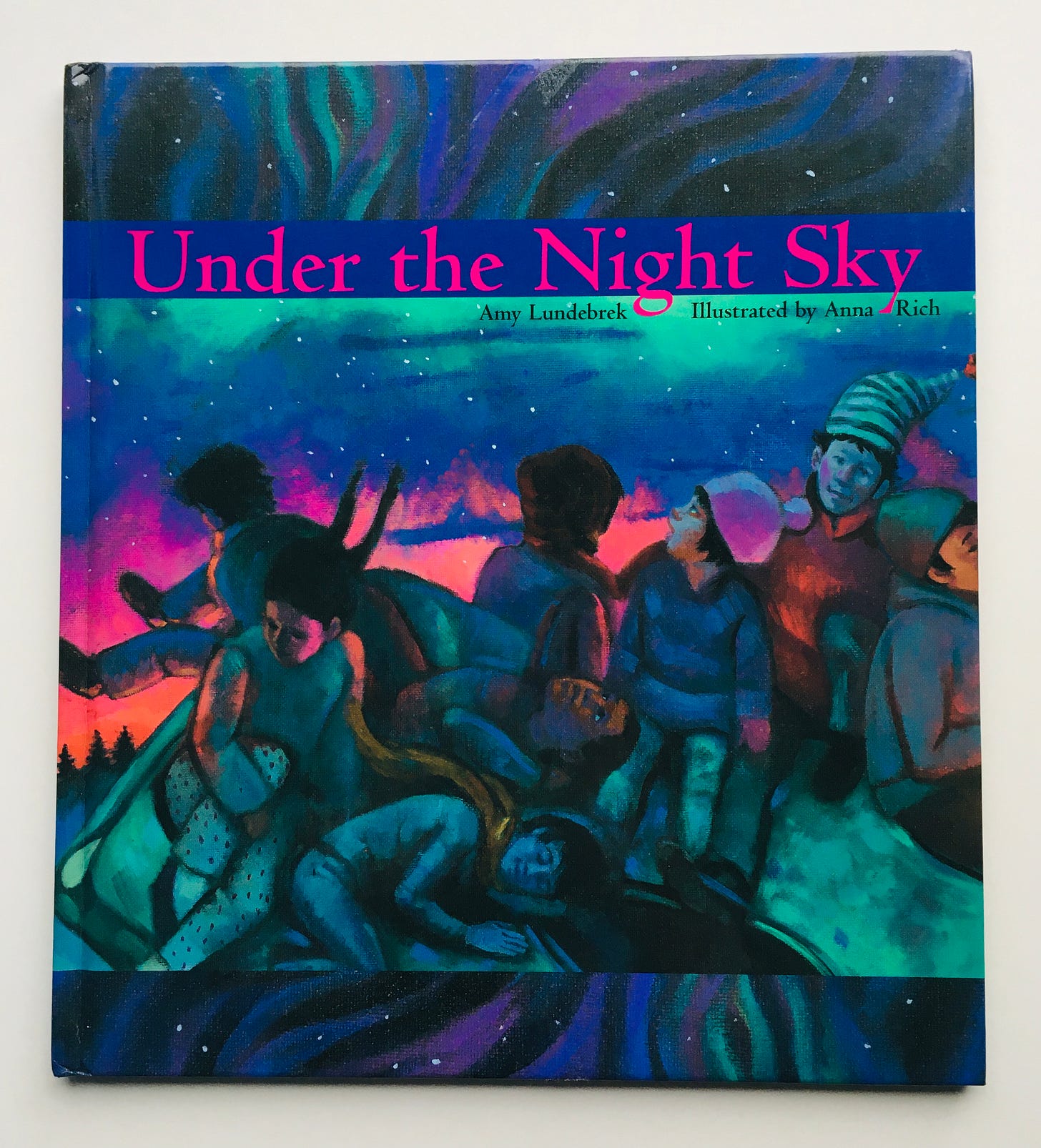
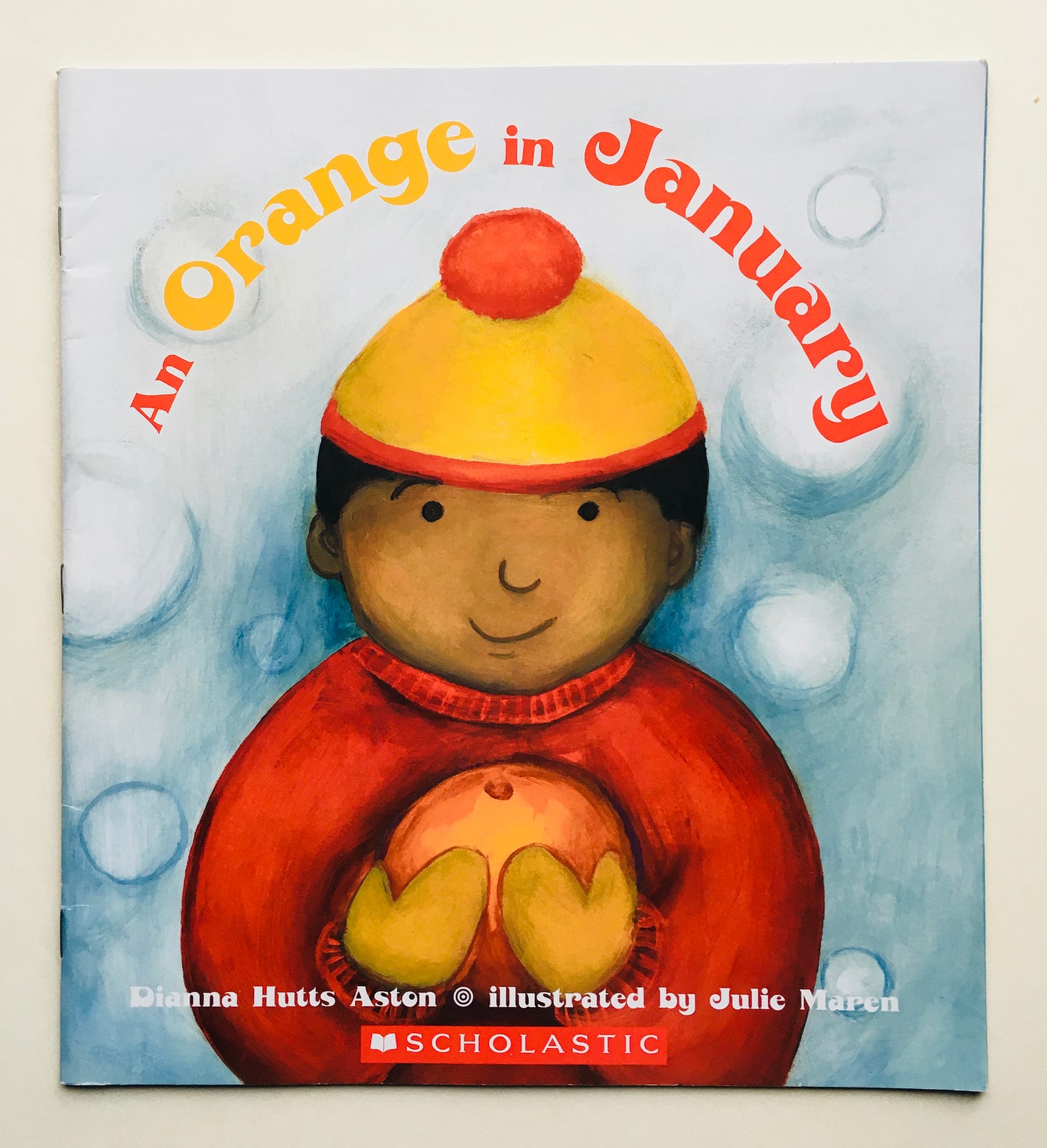
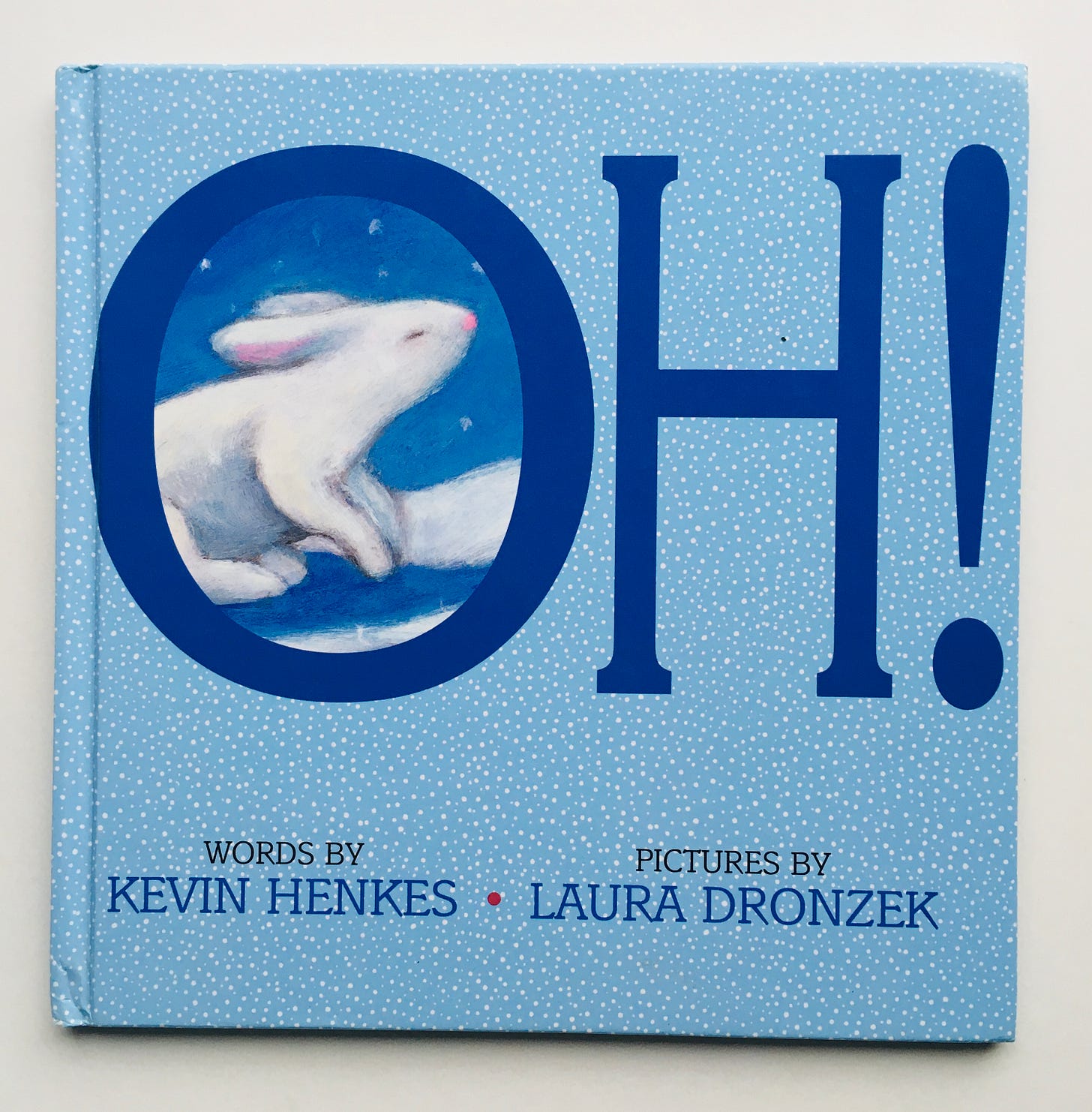

clicking over because of today's list (dec 2023) and remembering how much we loved Axle Annie! Such spirit! I get very nostalgic reading all of your recommendations, about to say goodbye again post holiday to 20yr old son living now on the east coast... and that the hours and hours we spent reading when he was smaller are definitely the favorite hours of my life.
These are amazing. Wow what a resource! I just picked up a number of sweet winter picture books from my library today.